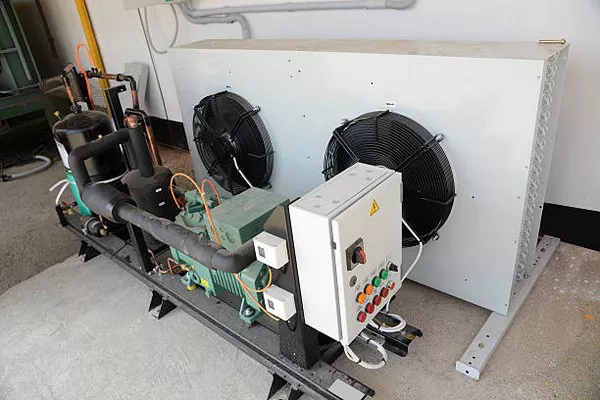Generators are invaluable assets during power outages, outdoor events, and for off-grid living. They provide the necessary electricity when you need it most, ensuring your appliances run smoothly and your lifestyle remains uninterrupted. However, with the power of a generator comes the responsibility of proper maintenance and protection. One frequently asked question is, “Can I put a tarp over my generator?” This article delves into the considerations, best practices, and alternatives for covering your generator with a tarp, ensuring its longevity and safe operation.
Understanding Generator Needs
Generators, like all machines, require protection from the elements to function effectively and last longer. Rain, snow, and even dust can cause significant damage to a generator’s internal components. Moreover, excessive exposure to moisture can lead to rusting, electrical faults, and even complete breakdowns. Therefore, shielding your generator from adverse weather conditions is crucial.
The Role of a Tarp
A tarp, short for tarpaulin, is a large sheet of strong, flexible, water-resistant material, often made of canvas, polyester, or polyethylene. Tarps are commonly used for covering objects to protect them from rain, wind, and sunlight. Given their protective properties, it seems logical to use a tarp for covering a generator. However, using a tarp for this purpose involves several critical considerations.
Safety Concerns with Tarps
While tarps can provide temporary protection, they are not without risks when used to cover a generator:
Ventilation: Generators need proper ventilation to prevent overheating and to ensure the exhaust gases are safely expelled. Covering a generator with a tarp can restrict airflow, leading to overheating. This not only reduces the efficiency of the generator but can also pose a fire hazard.
Exhaust Fumes: Generators produce carbon monoxide (CO), a colorless, odorless, and potentially lethal gas. Proper dispersion of exhaust fumes is essential to avoid CO buildup. A tarp can trap these fumes, increasing the risk of carbon monoxide poisoning, especially in enclosed spaces or areas with poor ventilation.
Moisture Accumulation: While a tarp can protect against rain, it can also trap moisture underneath, especially if it’s not correctly secured or if the ground is damp. This trapped moisture can promote rust and electrical malfunctions.
Wind Hazards: In windy conditions, a loosely secured tarp can flap around, causing physical damage to the generator or even becoming a projectile.
Best Practices for Using a Tarp
If you decide to use a tarp to cover your generator, follow these best practices to minimize risks:
Ensure Adequate Ventilation: Always leave sufficient space for air to flow freely around the generator. Avoid wrapping the tarp tightly around the generator. Instead, create a tent-like structure that allows air to circulate.
Proper Securing: Secure the tarp firmly to prevent it from blowing away or flapping in the wind. Use bungee cords, ropes, or stakes to anchor the tarp effectively.
Elevation: Keep the generator elevated to avoid water pooling underneath it. Place the generator on a dry, raised platform if possible.
Regular Checks: Inspect the generator and tarp regularly to ensure no moisture is accumulating and that the tarp is still securely in place.
Alternative Solutions
While a tarp can provide temporary protection, there are more effective and safer alternatives designed specifically for generator protection:
Generator Covers: Many manufacturers offer custom-fit generator covers made from durable, weather-resistant materials. These covers are designed to provide protection while allowing proper ventilation. Investing in a high-quality generator cover is often the best option for long-term protection.
Generator Tents and Canopies: These are portable shelters designed to protect generators from the elements while ensuring adequate ventilation and safe exhaust dispersion. They are often easy to set up and can be used in various weather conditions.
Enclosures and Sheds: Building a permanent or semi-permanent enclosure or shed can provide robust protection for your generator. Ensure the enclosure has sufficient ventilation and exhaust outlets to prevent overheating and carbon monoxide buildup.
Case Studies and Real-World Applications
To illustrate the importance of proper generator protection, consider the following real-world examples:
Case Study 1: The Weekend Camper
John, an avid camper, often uses a portable generator during his trips. On one occasion, he used a tarp to cover his generator during a rainy weekend. Despite his efforts to secure the tarp, it restricted airflow, causing the generator to overheat and shut down. John learned the hard way that proper ventilation is critical, even when using a tarp temporarily.
Case Study 2: The Homeowner’s Backup Plan
Samantha relies on a generator for backup power during frequent storms in her area. Initially, she used a tarp for protection, but after experiencing issues with moisture and wind, she invested in a generator tent. The tent provided the necessary protection and ventilation, ensuring her generator operated reliably during outages.
Expert Opinions
Experts in the field of generator maintenance emphasize the importance of proper protection and ventilation. According to James Peterson, a certified generator technician, “Using a tarp can be a quick fix, but it’s not a long-term solution. Generators need adequate ventilation to operate safely. Investing in a purpose-built cover or enclosure is the best way to protect your investment.”
Conclusion
In conclusion, while you can use a tarp to cover your generator, it comes with significant risks and limitations. Proper ventilation, moisture management, and secure attachment are crucial to ensuring the generator’s safe operation. However, for long-term protection and peace of mind, investing in a generator cover, tent, or enclosure is highly recommended. These solutions are designed specifically for the needs of generators, providing superior protection while ensuring safety and reliability.
By taking the necessary precautions and investing in the right protective measures, you can extend the life of your generator and ensure it operates efficiently when you need it most. Whether you choose a tarp, a custom cover, or a more permanent enclosure, always prioritize safety and proper maintenance to get the best performance from your generator.

